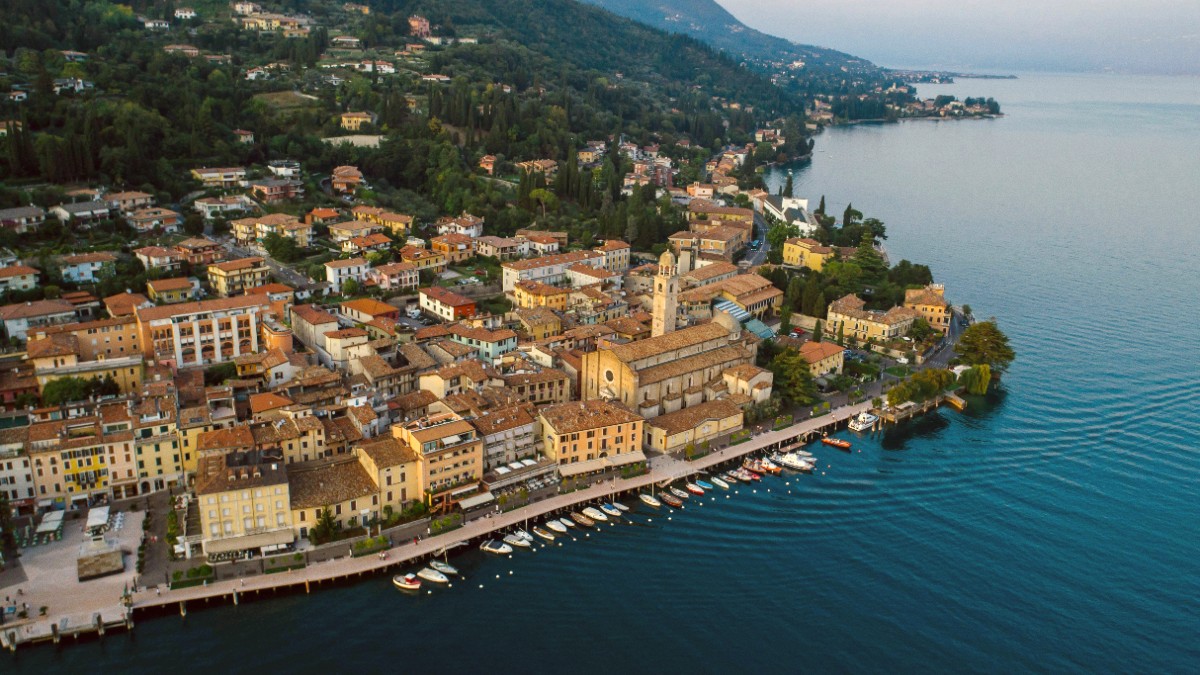
Lombardy And The Lakes, Italy
Spring (April-May): This period brings pleasant temperatures, typically averaging 10-20°C (50-68°F). Days grow increasingly sunny, and the surrounding landscape bursts into bloom. Precipitation is moderate, with occasional spring showers, but these clear quickly. Humidity remains comfortable. This season is ideal for sightseeing and outdoor activities, with weather cool enough for comfortable walking and cycling.
Summer (June-August): Lake Garda is warmest during the summer, with average temperatures ranging from 20-30°C (68-86°F). July and August often reach temperatures exceeding 30°C (86°F). This is the prime season for swimming and water sports. Thunderstorms occur, specifically in late afternoon or evening, often bringing a refreshing cool down. Humidity can be moderate to high. The northern lake, influenced by mountain breezes, often feels slightly cooler.
The warmest weather makes it ideal for lake swimming, sunbathing, and all water sports. All attractions, hotels, and restaurants operate at full capacity, featuring a wide range of services. The atmosphere is lively, with numerous events, festivals, and evening entertainment.
This is the busiest time, leading to crowds at popular towns, attractions, and on public transport. Accommodation prices peak, and availability can be limited. Restaurants can be busy, sometimes necessitating reservations. Roads experience congestion.
Fewer crowds, lower prices.
Quiet, authentic local experience; lowest accommodation prices; inexpensive flights; serene lake atmosphere.
Many tourist-oriented businesses close; reduced ferry services; lake activities unavailable; some towns feel deserted.
Best balance for many travelers.
Pleasant weather for outdoor activities and sightseeing; fewer crowds; reasonable prices. Spring brings blooming nature. Autumn offers harvest seasons and beautiful foliage.
Smaller services might have reduced hours; lake water cool for swimming in early spring/late autumn.
Warmest weather, peak activity.
Ideal for swimming and water sports; all attractions open; lively atmosphere; extended daylight.
Busiest time, large crowds; peak accommodation prices; limited availability; restaurant reservations needed; road congestion.
June to August have the best conditions for water sports, with warm water and reliable winds in the northern lake.
April-May and September-October deliver cooler temperatures and less intense sun, making active pursuits more comfortable.
Good for walking and exploring towns without intense heat or crowds.
Comfortable temperatures for exploring, harvest seasons, and beautiful foliage.
Ideal if quiet exploration is preferred.
Suitable for a more tranquil experience.
The lake in a different, often serene, light.
Italy is a member of the Schengen Area, a group of 27 European countries that have abolished passport and other types of border control at their mutual borders.
As Italy belongs to the Schengen Area, non-EU citizens who are visa-exempt travel freely within these countries for up to 90 days within any 180-day period.
Your passport must be valid for at least three months beyond your intended departure from the Schengen Area. It should have at least two blank pages for stamps.
The official currency in Italy is the Euro (€, EUR).
Italy boasts a high standard of medical care. Public hospitals generally perform well and service emergencies.
No specific vaccinations are required. Routine vaccinations should be up-to-date. Consult a travel health clinic.
Use High SPF sunscreen, wear a Wide-brimmed hat, and Sunglasses. Drink plenty of water; carry a reusable bottle (LifeStraw is an option for filtration bottles).
Mosquitoes appear, especially in the evenings. Use Insect repellent with DEET or Picaridin (e.g., Sawyer Products Picaridin Insect Repellent).
Wear comfortable, Supportive walking shoes to avoid blisters.
Tap water in towns around Lake Garda is safe and potable. Bottled water is available.
Food hygiene standards in Italy are stringent. Choose establishments that appear clean and busy.
A Basic first aid kit (e.g., From Amazon) with antiseptic wipes and bandages is a good idea.
Carry your European Health Insurance Card (EHIC) for state-provided healthcare.
Comprehensive travel insurance is strongly recommended to cover medical emergencies and evacuation.
Widely available (green cross sign). Pharmacists advise on minor ailments and fill prescriptions (bring doctor's note).
Overall crime rates in the Lake Garda region are low. Petty crime, like pickpocketing, is a main concern.
Comprehensive travel insurance is highly recommended for all visitors.
Medical emergencies, evacuation, trip cancellation, lost baggage, delays.
Confirm your policy covers planned activities like hiking or water sports.
AirHelp assists passengers with compensation for delayed or canceled flights.